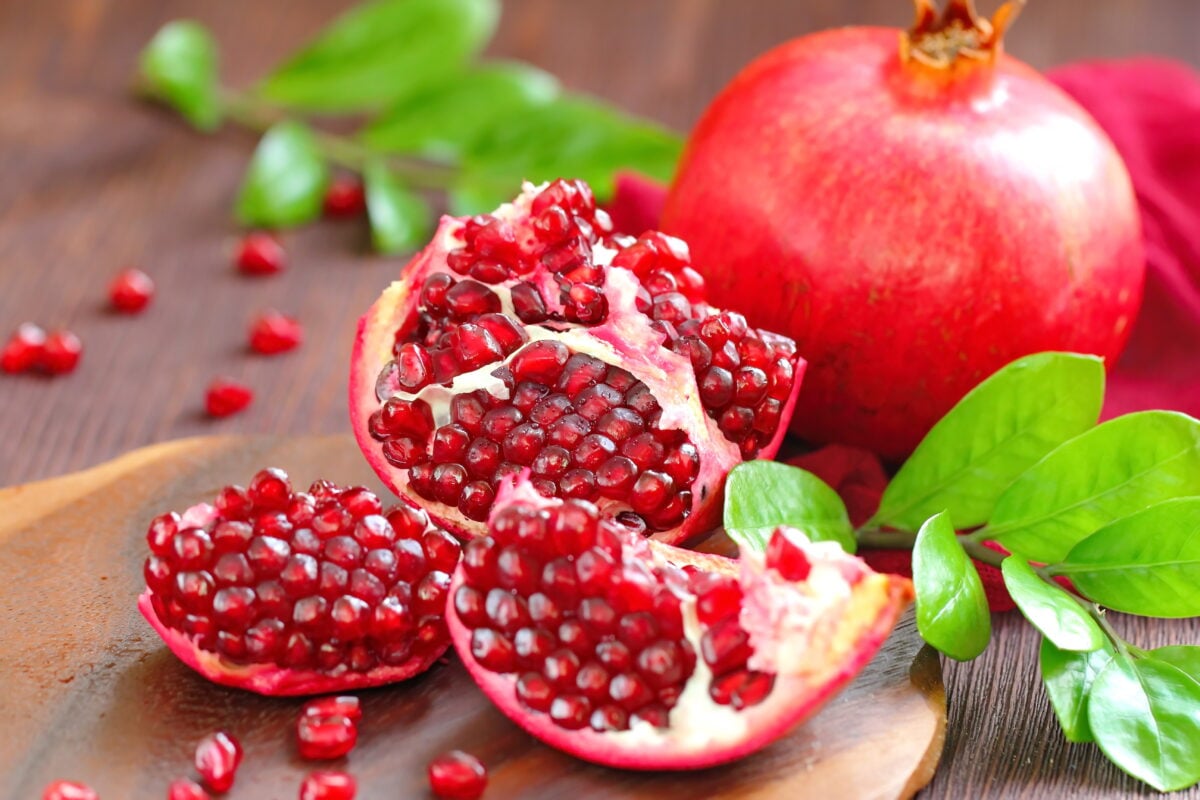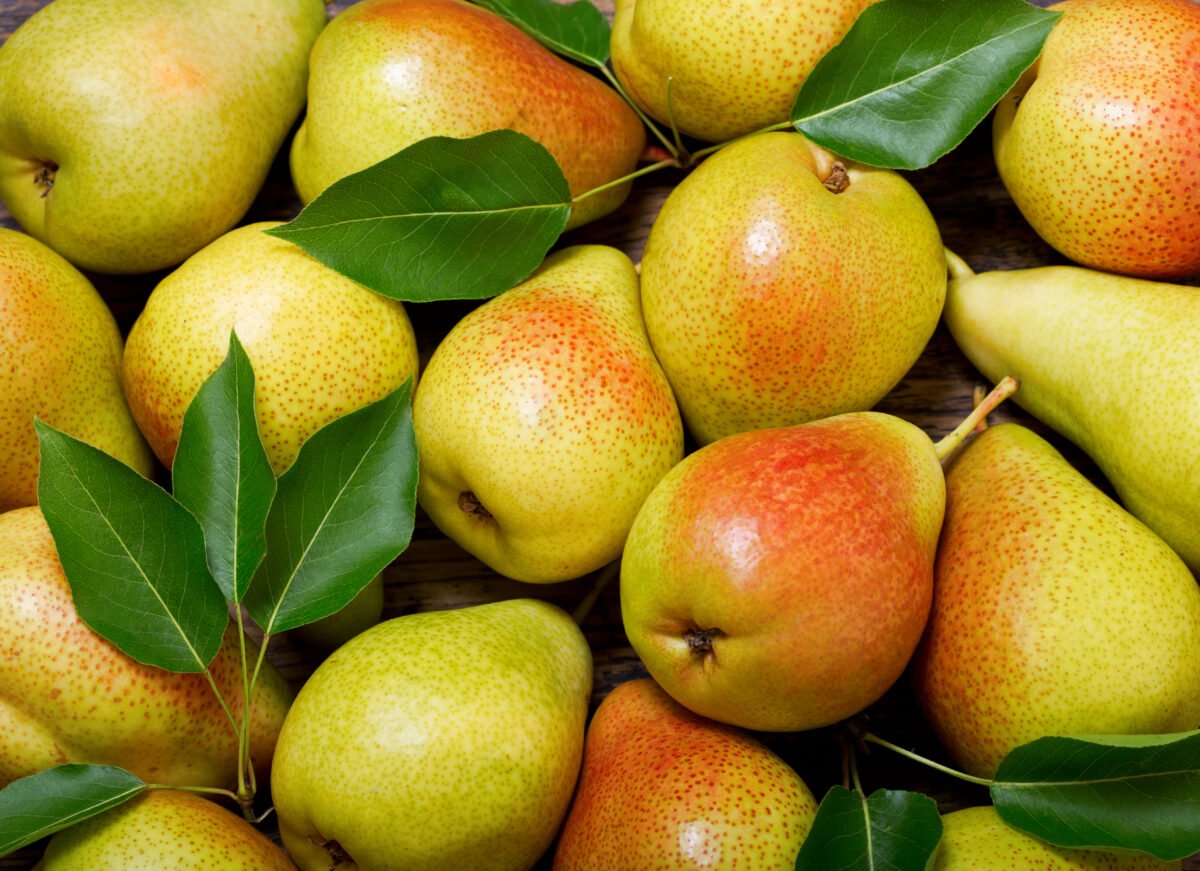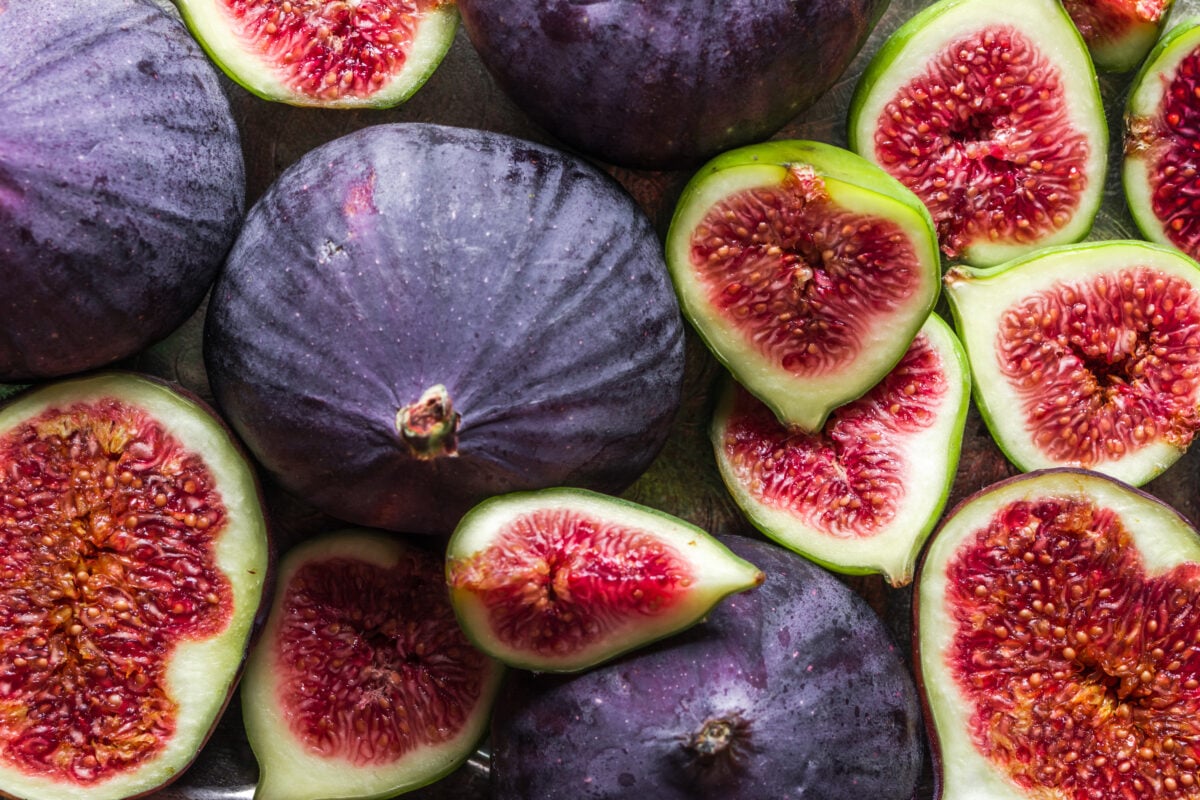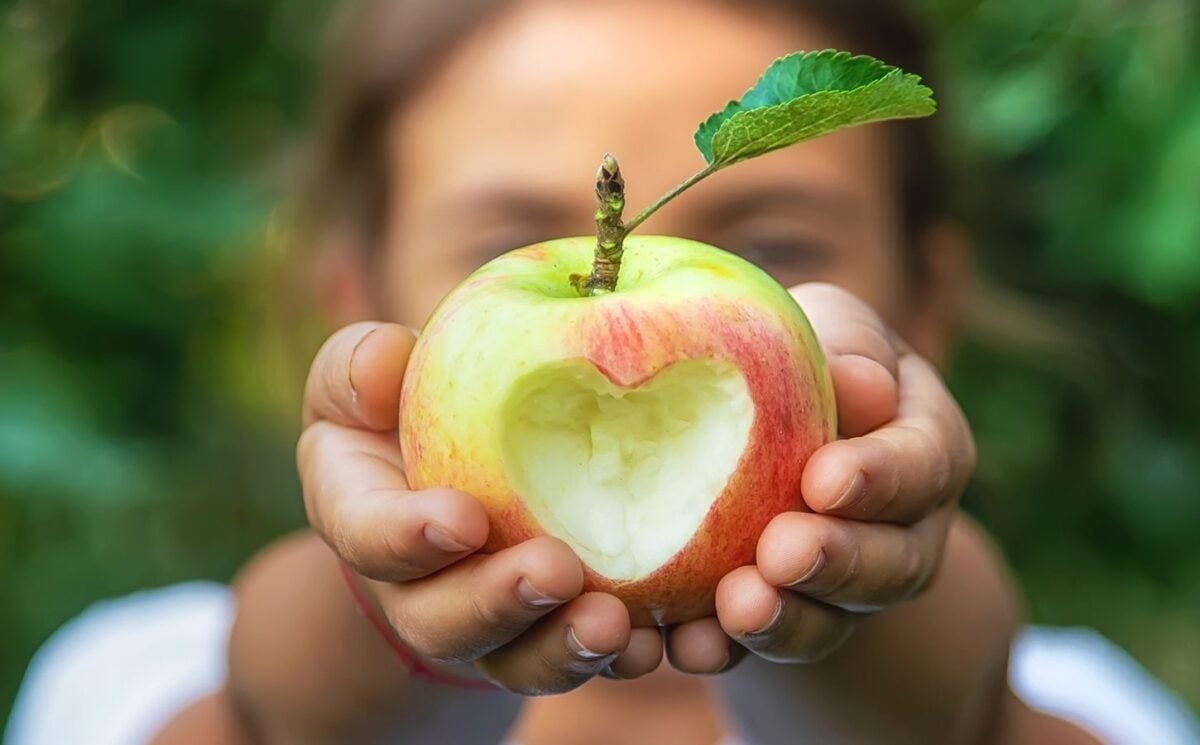Fruit is an outstanding source of essential vitamins, minerals, and other nutrients. Fruit is also varied, colorful, and delicious, and most people have a favorite variety. But what fruits are the healthiest? Here, Plant Based News (PBN) speaks to six different nutritionists about their go-to picks for the healthiest fruits, what makes them unique, and why you should start eating them.
Read more: Plant-Based Brand Heura To Open ‘Phamacy’
Pomegranate

Lina Kumar, registered nutritionist at Rebel With Veg and Centres For Endocrinology, Medicine, and Diabetes (CEMED), tells PBN that pomegranates are one of her favorites because they are healthy, versatile, and thrive in the Mediterranean.
“Pomegranate has the amazing omega 5, which is great for hormonal health for both men and women,” she says, and recommends that people try pomegranate seeds in smoothies, on cereal, as a garnish with curries, or as juice.
According to UCLA Health, pomegranate seeds have a variety of health benefits that “extend throughout the body,” including elevated endurance. They also support heart, digestive, and urinary health, and contain anti-cancer phytonutrients.
Lemons
In addition to pomegranate, Kumar’s other favorite fruit is the lemon, which is rich in folate – particularly the peel, which can be finely grated – and “can be used in so many ways.” She recommends trying lemon in water, salads, pasta, and “mostly everywhere!”
Lemons are best known for their vitamin C content, and each fruit contains approximately 35 milligrams – over 50 percent of the amount required for a well-balanced daily diet. According to Medical News Today, regular lemon consumption may lower stroke and heart disease risk, prevent cancer, increase iron absorption, and boost the immune system.
Blackberries
Jennifer Pallian, a Registered Dietitian (BSc RD), food scientist, and the founder of Foodess (who you may remember from this PBN explainer on spirulina), says that one of her favorite fruits is the blackberry, which she notes really stands out amongst other berries.
Blackberries are “packed with fiber” (containing around twice that of blueberries) which Pallian says can help you feel fuller for longer and aid digestion. They also have a low glycemic index (GI) of 25, making them ideal for maintaining stable blood sugar. They’re rich in vitamin C as well as the antioxidant ellagic acid, which has been linked to cancer prevention.
“There’s no question that my foremost fruit obsession is blackberries. I live in the Pacific Northwest and they grow wild all over the place – I harvest in late summer and freeze them for the rest of the year,” says Pallian. “Blackberries are definitely my go-to daily superfruit.”
Pears

Pallian’s other top pick is pears, which she describes as “an underrated nutritional powerhouse” with “impressive” fiber content. “One medium-sized pear contains about 6 grams of fiber, which is about 20 percent of the daily recommended intake (and 33 percent more than apples), making them great for gut health,” explains Pallian.
Pears also have a “unique” combination of soluble fiber, sorbitol, and fructose, which can help prevent constipation. They are soft and relatively low in acidity, which makes them gentle on sensitive stomachs. “I love to include pears in my morning breakfast bowl,” Pallian adds.
Read more: 5 Benefits To Food Processing
Papaya
Nutritional therapist Julie Stewart, MAPharmT, mBANT, says that papaya is her favorite fruit, describing it as a “powerhouse of nutrients” with a wide range of health benefits.
“I call papaya a ‘multi-tasker’ fruit because the different parts – from the delicious soft flesh, to the inner seeds, even the roots and outer leaf all have unique health benefits,” says Stewart. “Papaya is high in nutrients such as vitamin C, folate, beta carotene that helps form vitamin A, magnesium, vitamin E, vitamin K and antioxidants.”
Papaya also contains “a bit of iron and calcium,” and Stewart notes that the fruit has been linked by various studies to eye health, heart health, and skin health. It is also thought to have some anticancer properties and anti-inflammatory properties.
Avocado
Sarah Norman, mBANT, a Registered Nutritional Therapist and the founder of Nourishing Pathway, tells PBN that avocado is one of her favorite fruits. (She also says: “Yes, it’s a fruit!”)
“Rich in heart-healthy monounsaturated fats, avocados help keep you feeling satisfied and full for longer, which can aid in weight management and prevent overeating,” explains Norman. “These healthy fats also support your brain health, help reduce inflammation, and can enhance nutrient absorption, meaning they help your body absorb essential fat-soluble vitamins like A, D, E, and K from other foods.”
Avocados are also rich in antioxidants and each one contains more potassium than the average banana. Norman recommends eating them with scrambled tofu, in salads, as guacamole, and even in a simple and nutritious chocolate mousse.
Figs

Karine Stephan, Registered Nutritional Therapy and Lifestyle Medicine Practitioner and founder of Happy Living Nutrition, says she eats a fresh fig or two per day.
“I try to eat fruits in season whenever possible,” she explains. “Figs are incredibly versatile – I enjoy them in salads or as a dessert. They are also high in fiber and bone-friendly minerals. Eating fruits in season is a great way to diversify our diet and ensure that we are consuming fruits that are at their freshest and most nutritious, while also reaping environmental benefits.”
Both dried and fresh figs are rich in fiber, vitamins, and minerals, including calcium, magnesium, iron, and essential carbohydrates. According to the BBC‘s Good Food, two medium-sized fresh figs count as one of your five recommended portions of fruit and vegetables per day, as does around 30g of the dried version.
Plums
Rohini Bajekal, Nutritionist and Board-Certified Lifestyle Medicine Professional, also picks a fruit that is currently in season. Early October is plum season, and the popular, purple stone fruit is at its most flavorsome, juicy, and nutritious at this time of year.
“Two plums make up one serving,” says Bajekal. “They are a source of both soluble and insoluble fiber, which keeps our gut microbiome healthy. Dried plums are called prunes and are also fantastic for bone health as they are a source of Vitamin K, magnesium, potassium, and boron.”
Plums contain phosphorus, which promotes bone and teeth health, and both fresh and dried varieties can help prevent and ease constipation. On the topic of fruit in general, Bajekal notes that “Whole fruit is not just ‘sugar and water’ – they come in a perfect package with fiber, vitamins, and minerals.”
Apples
The humble apple, which is one of the top three most popular fruits in the world, is picked by three of the nutritionists we spoke to, including Norman, Stephan, and Bajekal.
“It sounds like an obvious choice but apples are fantastic because they’re not only healthy, they’re versatile,” explains Norman. “They can be eaten raw, stewed, grated, baked, added to salads, and used to sweeten desserts. I pair apple with peanut butter for a yummy but healthy snack. They’re rich in fiber which is great for your digestive health, especially the soluble fiber pectin which has been shown to help lower cholesterol levels.”
Apples are chock-full of nutrients and antioxidants such as the flavonol quercetin, which is anti-inflammatory. Studies indicate it may also help to lower blood pressure. Apples are rich in fiber, which supports digestive health, while pectin may help lower cholesterol levels.
“I am particularly fond of stewed apples, as they are higher in pectin,” says Stephan. “Pectin is a soluble fiber that dissolves in water, forming a gel-like substance in the digestive tract. This gel-like substance can have several positive effects on gut health.”
‘Most of the vitamins in an apple are located directly under the peel’
Nutritional values vary significantly depending on the apple, where it was grown, when it was picked, and so on, but each one generally contains around 12mg of vitamin C per 100g, according to Bajekal. This means that a single fruit contains 15 percent of your RDA.
“One of my favorite fruits are apples – from crisp Gala apples to a tart Granny Smith,” explains Bajekal. “Most of the vitamins in an apple are located directly under the peel and flavonoids (naturally occurring phytonutrients providing a range of health benefits) are located in the peel itself.”
Bajekal also suggests picking out the seeds and eating the core of the apple along with the skin. This minimizes food waste, but it also ensures you ingest more of the 100 million beneficial bacteria contained in the average apple, 90 percent of which are at the very center.
Read more: 7 Fermented Plant Foods That Could Boost Your Gut Health






